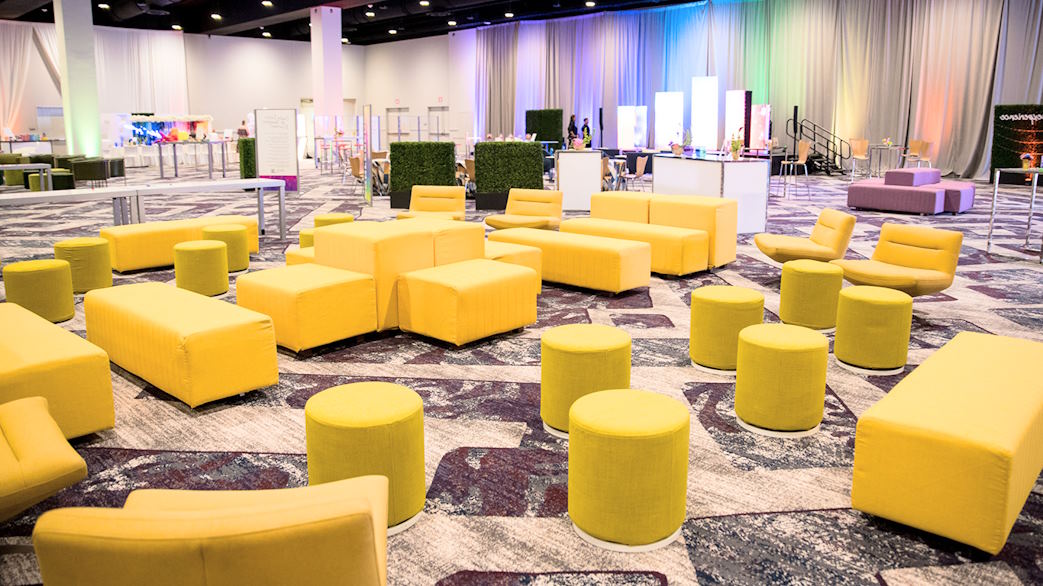Event design is a multifaceted art that involves orchestrating various elements to create unforgettable experiences. One of the most powerful and yet often underestimated components of event design is color. The way colors are chosen and combined can significantly influence the mood and atmosphere of an event, affecting participants’ emotions and perceptions. In this article, we delve into the world of color psychology, exploring how different hues can shape the ambiance of an event and leave lasting impressions on attendees.
The Basics of Color Psychology
Before delving into the impact of colors on event design, it’s important to understand color psychology. Colors have the innate ability to evoke emotions and sensations, largely due to their connection with our subconscious minds. Warm colors like red, orange, and yellow tend to elicit feelings of energy, excitement, and warmth. Cool colors such as blue, green, and purple, on the other hand, create a sense of calmness, tranquility, and focus. Neutrals like white, black, and gray can serve as powerful complements, enhancing other colors’ effects and conveying different levels of formality.
Additionally, cultural influences play a significant role in color perception. Colors that hold specific meanings in one culture might have completely different associations in another. Understanding these cultural nuances is crucial when planning events that involve participants from diverse backgrounds.

Choosing the Right Colors for Your Event
Selecting the appropriate color palette for your event involves a careful consideration of color associations and aligning them with your event’s goals. For energetic and exciting events like product launches or celebrations, warm and vibrant colors can generate enthusiasm and a sense of dynamism. Conversely, for more serene and introspective gatherings, cool and muted colors can create an atmosphere conducive to relaxation and reflection. Professional and formal events often benefit from neutral colors that convey sophistication and seriousness.
Creating Mood and Atmosphere
Colors play a pivotal role in setting the desired mood and atmosphere for an event. Warm colors can infuse vibrancy and energy into a space, fostering an environment where interaction and engagement thrive. Imagine a networking event with a rich red and orange color scheme, stimulating conversations and connections among attendees. On the other hand, cool colors can help establish a serene ambiance that encourages focus and concentration. A conference designed with cool blue and green hues can facilitate deep thinking and intellectual discussions.
However, the key lies in achieving a balance. Too much of any one color can overwhelm participants and diminish the desired impact. Skillful use of color combinations is essential to create a harmonious and visually appealing atmosphere.
The Impact of Cultural Differences
Considering cultural diversity is paramount in event design. Colors hold varying meanings across different cultures, and the wrong choice can inadvertently offend attendees. For instance, while white symbolizes purity and innocence in some cultures, it signifies mourning in others. Being aware of these differences ensures that events remain inclusive and respectful of attendees’ backgrounds.

Strategies for Effective Color Implementation
Implementing colors effectively requires careful planning and consideration. Establishing a color hierarchy is crucial; determining a dominant main color and complementary accent colors helps maintain visual coherence. Consistency across event elements like decorations, lighting, branding, and signage ensures a unified experience. Lighting effects also play a significant role in evoking emotions; dynamic lighting can enhance mood transitions throughout an event.
Adapting to Event Context and Purpose
Each event type has its own objectives and contexts. Adorning venues based on event type ensures alignment with attendees’ expectations. A wedding, for example, necessitates a different color scheme compared to a corporate seminar. By tailoring color choices to event themes and goals, organizers can craft experiences that resonate with participants.
The Evolving Trends in Event Color Design
Color trends are ever-evolving, influenced by societal shifts and technological advancements. With the rise of LED lighting and immersive technologies, events can offer dynamic color experiences that were previously unattainable. Balancing innovation with timeless color psychology principles ensures that event designs remain relevant and impactful.
